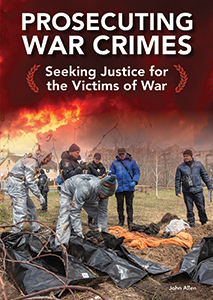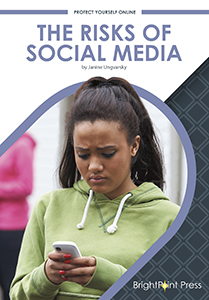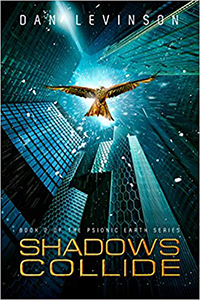Browse Our Books
You can browse our books easily with any of the following filters, hover over the filters or their titles to see their descriptions.
Reading Level
Categories
Or you can use quick search or switch to advanced search for better results...
Search Results (Found 7948 results)

Pros and Cons (Voyager)
Pros and Cons takes readers through opposing sides of some of today's most heated debates. Offering a short history of the issue, context of what's at stake, and three major arguments on each side, these titles will prepare readers to make informed decisions about issues impacting their communities.

Prosecuting War Crimes: Seeking Justice for the Victims of War 
As modern warfare has become more hazardous to soldiers and civilians, nations have worked together to create and enforce rules of war. Prosecuting War Crimes: Seeking Justice for the Victims of War explores how treaties such as the Geneva Conventions have set guidelines to protect noncombatants and govern the treatment of military prisoners. The book also looks at how war criminals can be brought to justice, from the Nuremberg Trials to the Balkans tribunals to evidence of war crimes in RussiaÎs invasion of Ukraine.

Protect Yourself Online (BrightPoint Press)
Protect Yourself Online informs readers about the benefits, risks, and dangers of being online. The series examines social media, the protection of personal data, and ways to avoid online predators, online addiction, and online scams. It also provides information on how to be a smart, safe internet user. Each book includes a graphic that presents key information visually, source notes, and resources to aid in further research.

Protecting Our People
What does it take to serve our country and protect our people? What does the U.S. Secret Service really do? Could you be an FBI agent some day? Read these books for an introduction to the important service men and women in these jobs do to keep people safe.

Protest! March for Change
Millions of Americans have marched and protested to fight inequality and to bring about social change. These large gatherings, filled with powerful and courageous voices, have shined a light on important issues and resulted in new laws. This series covers some of the most famous marches in U.S. history. Each book includes a table of contents, glossary of key words, index, author biography, sidebars, and timeline.

Protest: A History of Social Movements in America
The First Amendment guarantees the right to peacefully protest and Americans have embraced this right for nearly two centuries. Protest: A History of Social Movements in America focuses on the people who faced adversity while speaking out for women?s suffrage, Black civil rights, the environment, LGBTQ rights, and more.

Provinces and Territories of Canada 
Take a cross-country journey in the pages of Provinces and Territories of Canada. Learn about the environment, history, tourist attractions, arts, sports, and cultures that make each province and territory unique. Engaging text and high-quality visuals provide fascinating insight into the provinces and territories that comprise this vast nation.

Psionic Earth
In a world where powerful nations wage grand wars with psionic super-soldiers, the outcome of the coming conflict falls to a handful of individuals. Unaware of the part they will play in the great geo-political game, can these soldiers and scientists protect their countries without losing themselves?

Psychology (Curriculum Connections)
This series introduces high school readers to essential, curriculum-linked knowledge about the key aspects of psychology, dealing with cognitive and emotional development, social and abnormal psychology, the biology of the brain, and the history of this social science. Additionally, unfamiliar terms are explained throughout in glossary side bars on the page where the new word is introduced.
